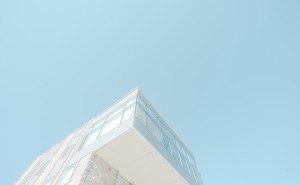We have already discussed the history of aluminium window profiles. But what about the future? To answer this question, we base ourselves on the current trends and the specific characteristics of aluminium.
Throughout the years, aluminium window profiles have been compared to their wooden and PVC counterparts. The high U-value was a major disadvantage of aluminium for a long time. This detriment was addressed by adding a thermal plastic barrier. Aluminium window profiles now score at least as well in terms of insulating capacity as wood and PVC. However, this is not a reason for producers to reduce their research into possible improvements. Quite the contrary.
Sustainability
There has been a clear social trend towards environmental awareness in the last decades. Sustainability is a “trending topic”. Governments are imposing stricter requirements on all kinds of sectors, including the construction sector. Buildings must be optimally insulated to achieve energy savings. The imposed values were made 50% more stringent in Great Britain between 2002 and 2017, for example. This environmentally-conscious policy leads to an increased popularity of passive houses in many countries. Everything that can be insulated, must be insulated as well as possible. An important aspect is finding window profiles with the correct thermal values and a sturdiness which allows for triple glazing, preferably in a sleek design (this latter certainly plays into the hands of aluminium).
It is therefore not surprising that the window industry picks up this trend and pays continuous attention to improving the thermally insulated profiles. The task is clear: develop increasingly better profiles that meet the increasingly stringent requirements of both governments and architects with their extremely ambitious projects.
Even better thermal values
Even though the thermally interrupted aluminium window profiles score well in terms of insulation values, as stated above, manufacturers keep looking for optimisations. They are, for example, looking at the ideal distance between the aluminium components of the frame on both sides of the glass. Research also focuses on the points where the insulation strips (made of polyamide, Noryl, ABS or PVC) and the frames meet. This must be as small as possible.
As a result of all this research, it is generally expected that windows with even better thermal values will be developed in the near future. The industry must irrevocably evolve with these developments. Thanks to the increasing individualisation of the construction projects, there is a need for a high degree of automation and flexibility in development and production. This is only possible with the right machines.
Based on all this, combined with the fact that the green metal aluminium is completely recyclable, allows for a modern and sleek design with multiple glazing, and lasts a very long time, we dare to conclude that the future of the thermally insulated aluminium window profiles looks more than rosy.





Leave a comment